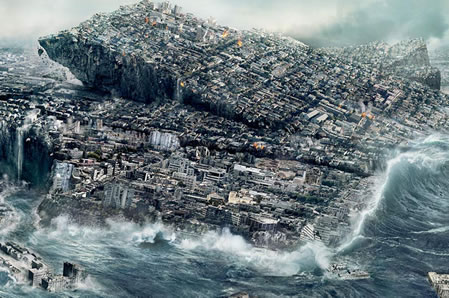The magnitude of the 2011 Tohoku quake (M 9.0) caught many seismologists by surprise, prompting some to revisit the question of calculating the maximum magnitude earthquake possible for a particular fault. New research offers an alternate view that uses the concept of probable maximum magnitude events over a given period, providing the magnitude and the recurrence rate of extreme events in subduction zones for that period. Most circum Pacific subduction zones can produce earthquakes of magnitude greater than 9.0, suggests the study.
The idea of identifying the maximum magnitude for a fault isn’t new, and its definition varies based on context. This study, published online by the Bulletin of the Seismological Society of America (BSSA), calculates the “probable maximum earthquake magnitude within a time period of interest,” estimating the probable magnitude of subduction zone earthquakes for various time periods, including 250, 500 and 10,000 years.
“Various professionals use the same terminology – maximum magnitude – to mean different things. The most interesting question for us was what was going to be the biggest magnitude earthquake over a given period of time?” said co-author Yufang Rong, a seismologist at the Center for Property Risk Solutions of FM Global, a commercial and industrial property insurer. “Can we know the exact, absolute maximum magnitude? The answer is no, however, we developed a simple methodology to estimate the probable largest magnitude within a specific time frame.”
The study’s results indicated most of the subduction zones can generate M 8.5 or greater over a 250-return period; M 8.8 or greater over 500 years; and M 9.0 or greater over 10,000 years.
“Just because a subduction zone hasn’t produced a magnitude 8.8 in 499 years, that doesn’t mean one will happen next year,” said Rong. “We are talking about probabilities.”
The instrumental and historical earthquake record is brief, complicating any attempt to confirm recurrence rates and estimate with confidence the maximum magnitude of an earthquake in a given period. The authors validated their methodology by comparing their findings to the seismic history of the Cascadia subduction zone, revealed through deposits of marine sediment along the Pacific Northwest coast. While some subduction zones have experienced large events during recent history, the Cascadia subduction zone has remained quiet. Turbidite and onshore paleoseismic studies have documented a rich seismic history, identifying 40 large events over the past 10,000 years.
“Magnitude limits of subduction zone earthquakes” is co-authored by Rong, David Jackson of UCLA, Harold Magistrale of FM Global, and Chris Goldfinger of Oregon State University. The paper will be published online Sept. 16 by BSSA as well as in its October print edition.
Agencies/Canadajournal/Press Releases
 Canada Journal – News of the World Articles and videos to bring you the biggest Canadian news stories from across the country every day
Canada Journal – News of the World Articles and videos to bring you the biggest Canadian news stories from across the country every day



